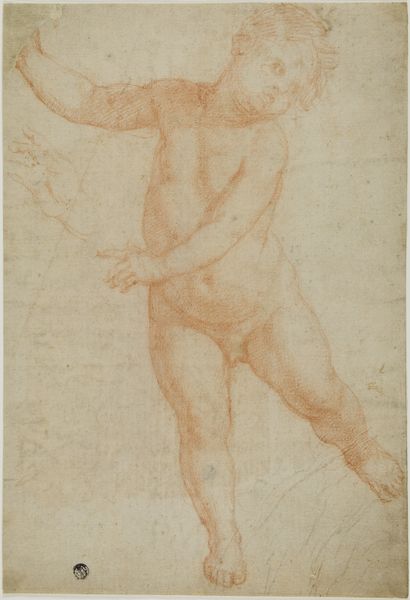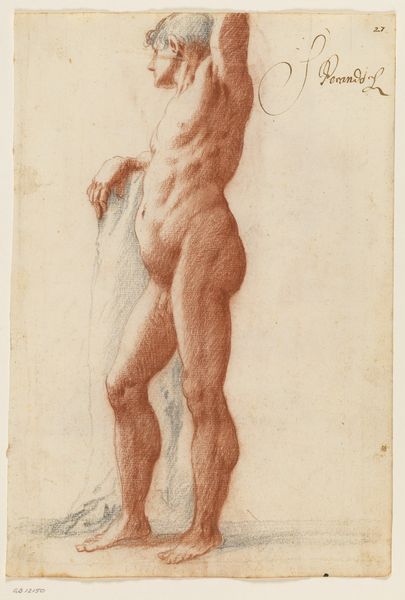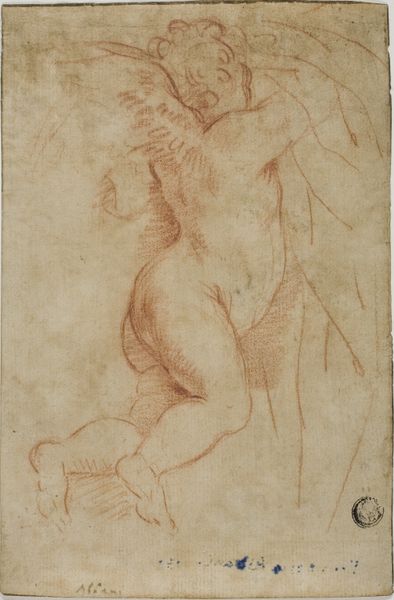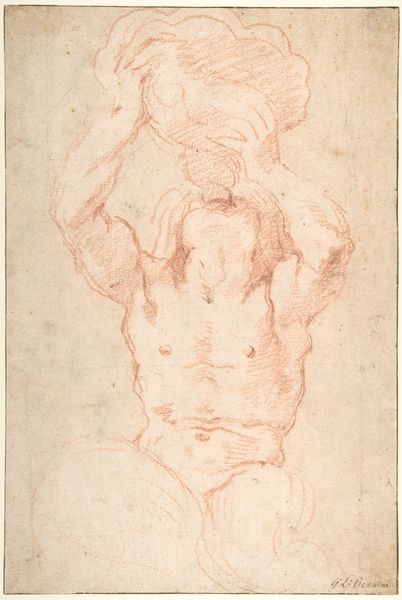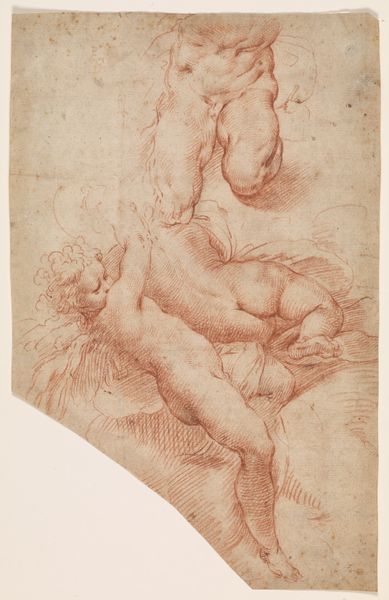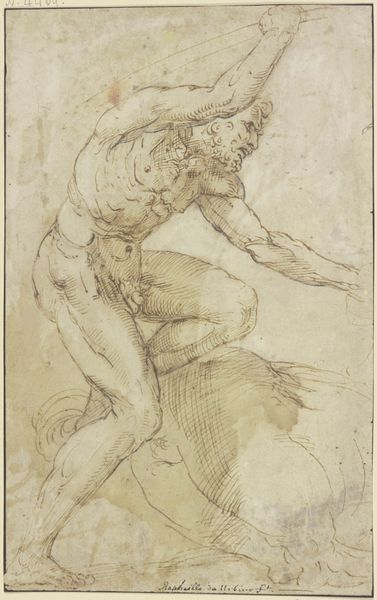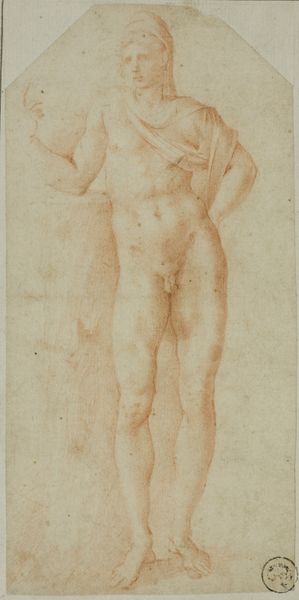
Study of Nude Figure in Front View Looking Upward; Study of Torso and Left Arm 1600 - 1700
0:00
0:00
drawing, print, paper, charcoal
#
drawing
# print
#
charcoal drawing
#
figuration
#
paper
#
11_renaissance
#
charcoal
#
academic-art
#
nude
Dimensions: 10-3/16 x 7-3/16 in. (25.8 x 18.3 cm)
Copyright: Public Domain
Editor: Here we have an intriguing piece—*Study of Nude Figure in Front View Looking Upward; Study of Torso and Left Arm*, a drawing in charcoal from the 17th century, attributed to an anonymous artist. It has a definite anatomical focus, almost like a Renaissance workshop sketch. How do you interpret this work? Curator: Well, considering this within the context of academic art training during that period, these kinds of figure studies were fundamental. They served a clear socio-political purpose – to instill a sense of idealized human form, drawing heavily from classical ideals that reinforced power structures. We must consider, though, that artistic "freedom" was constrained by the patronage system, so even anonymous works indirectly support a particular worldview. Does it strike you as detached or sterile? Editor: Detached, definitely. I get a sense that it's less about the individual being depicted, and more about mastering the depiction itself, adhering to an established set of aesthetic rules. Curator: Exactly. Consider the power dynamics implicit here: a presumably male artist studies a nude model, codifying ideals of beauty and masculinity, intended to shape public taste and inform further artworks commissioned often by equally male patrons. It isn't a neutral exercise, but one loaded with historical and societal meaning. Think of it as propaganda for the powerful, rendered in charcoal. Who has the power to decide what constitutes beauty or artistic value? Editor: That's a powerful point! So it’s less about capturing reality and more about constructing an image of authority. Curator: Precisely. And understanding that construction, those power dynamics, is crucial to understanding the history of art, and how art participates in our visual culture still today. Editor: That's given me a whole new perspective. I always considered such drawings technical exercises but failed to think about their cultural implications. Curator: Seeing art within the structures of its creation opens new possibilities for critical engagement, enriching our perception beyond the visual surface.
Comments
No comments
Be the first to comment and join the conversation on the ultimate creative platform.

